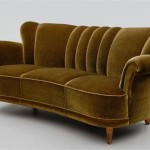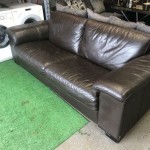Sofa Sleeper Target: A Comprehensive Guide to Selection and Use
The sofa sleeper, also known as a sleeper sofa or pull-out sofa, presents a versatile furniture option, serving as both seating and a temporary bed. As a staple in homes and hospitality settings, the sofa sleeper's availability at retailers like Target makes it an accessible choice for consumers seeking space-saving solutions. This article provides a comprehensive overview of sofa sleepers, focusing on factors to consider when selecting one, its functionalities, and considerations for maintenance and longevity. Understanding these aspects will enable informed purchasing decisions and ensure optimal utilization of a sofa sleeper acquired through Target or other retail channels.
The sofa sleeper's primary advantage lies in its duality. During the day, it functions as a standard sofa, providing comfortable seating for individuals and families. At night, it transforms into a bed, accommodating overnight guests or serving as a spare sleeping surface. This dual functionality is particularly beneficial in smaller apartments, condos, or guest rooms where space optimization is crucial. The design evolution of sofa sleepers has resulted in improved comfort levels in both the seating and sleeping configurations, addressing the historical criticisms of bulky frames and uncomfortable mattresses.
Target, as a major retailer, offers a range of sofa sleepers in various styles, sizes, and price points. Consumers can find options that align with their aesthetic preferences, budget constraints, and specific needs. The selection process, however, requires careful consideration of several factors to ensure satisfaction and long-term value.
Key Point 1: Evaluating Size, Style, and Configuration
The initial stage of selecting a sofa sleeper involves assessing the available space and determining the optimal size and configuration. This includes measuring the room where the sofa sleeper will be placed and considering the clearance needed to fully extend the bed. Overlooking this step can lead to purchasing a sofa sleeper that is either too large for the designated space or too small to comfortably accommodate sleepers.
Sofa sleepers are typically available in twin, full, queen, and king sizes. The choice depends on the number of people expected to sleep on the bed and their individual comfort preferences. A twin-sized sofa sleeper is suitable for a single sleeper, while a queen or king-sized option can comfortably accommodate two adults. Full-sized options offer a compromise, suitable for single adults or couples who do not require a large sleeping surface.
Style considerations encompass the overall aesthetic of the room and the desired level of comfort. Sofa sleepers are available in a variety of styles, ranging from traditional to contemporary, with options for different arm styles, back heights, and upholstery materials. The chosen style should complement the existing furniture and décor to create a cohesive and visually appealing space.
Configuration refers to the mechanism used to convert the sofa into a bed. Common configurations include pull-out mechanisms, where the mattress is folded and stored inside the sofa frame, and futon-style designs, where the backrest folds down to create a flat sleeping surface. Pull-out mechanisms generally offer a more traditional bed-like experience, while futon-style designs are often more compact and affordable.
Before making a purchase, it is advisable to physically test the sofa sleeper, if possible. This allows for assessing the ease of operation of the conversion mechanism, the comfort of the seating, and the overall build quality. Reading online reviews and comparing different models can also provide valuable insights into the pros and cons of various options.
Key Point 2: Assessing Mattress Quality and Support
The mattress is a critical component of a sofa sleeper, directly impacting the sleep quality and overall comfort of the sleeper. The mattress materials, thickness, and support system should be carefully evaluated to ensure a comfortable and restful experience. Historically, sofa sleeper mattresses were often thin and uncomfortable, leading to negative perceptions. Modern sofa sleepers, however, often feature improved mattress designs with enhanced comfort features.
Common mattress materials include innerspring coils, memory foam, and latex. Innerspring mattresses offer a traditional feel with good support and bounce. Memory foam mattresses conform to the body's shape, providing pressure relief and reducing motion transfer. Latex mattresses are known for their durability, breathability, and hypoallergenic properties. The choice of mattress material is ultimately a matter of personal preference and individual needs.
Mattress thickness is another important factor to consider. Thicker mattresses generally provide more cushioning and support, resulting in a more comfortable sleeping experience. However, thicker mattresses may also require a larger sofa frame, potentially impacting the overall size of the sofa sleeper. A balance between comfort and size should be struck based on the available space and individual preferences.
The mattress support system refers to the internal structure that provides support and prevents sagging. Innerspring mattresses rely on coils for support, while memory foam and latex mattresses often incorporate high-density foam layers to provide a supportive base. The quality of the support system is crucial for ensuring proper spinal alignment and preventing back pain.
Some sofa sleepers feature mattresses with additional comfort features, such as pillow tops or quilted surfaces. These features can enhance the overall sleeping experience but may also add to the cost of the sofa sleeper. Consumers should weigh the benefits of these features against their budget constraints.
When assessing mattress quality, it is advisable to inquire about the mattress's warranty and return policy. A longer warranty typically indicates a higher level of confidence in the product's durability and performance. A flexible return policy allows for returning the sofa sleeper if it does not meet expectations after a trial period.
Key Point 3: Evaluating Frame Construction and Durability
The frame construction of a sofa sleeper is a crucial determinant of its durability and longevity. A well-constructed frame provides a stable and supportive foundation for both the seating and sleeping configurations. The frame materials, joinery methods, and overall build quality should be carefully evaluated to ensure that the sofa sleeper can withstand regular use and maintain its structural integrity over time.
Common frame materials include hardwoods, softwoods, and metal. Hardwood frames, such as those made from oak or maple, are known for their strength and durability. Softwood frames, such as those made from pine, are more affordable but may not be as resistant to wear and tear. Metal frames offer a combination of strength and affordability, but may not be as aesthetically pleasing as wood frames.
The joinery methods used to assemble the frame also contribute to its overall strength and stability. Common joinery methods include mortise and tenon joints, dovetail joints, and screw joints. Mortise and tenon joints are considered to be the strongest type of joinery, followed by dovetail joints. Screw joints are a less expensive option but may not be as durable over time.
The overall build quality of the sofa sleeper can be assessed by examining the details of its construction. This includes checking for loose joints, uneven surfaces, and any signs of poor workmanship. A well-built sofa sleeper should feel solid and sturdy, with no noticeable wobbling or creaking.
The mechanisms used to convert the sofa into a bed should also be evaluated for their durability and ease of use. Look for mechanisms that are smooth and easy to operate, with no excessive friction or binding. The mechanism should also be able to withstand repeated use without showing signs of wear and tear.
The upholstery material also contributes to the overall durability of the sofa sleeper. Common upholstery materials include fabric, leather, and synthetic leather. Fabric upholstery is available in a wide range of colors and patterns, but may be more susceptible to staining and wear. Leather upholstery is more durable and easier to clean, but may also be more expensive. Synthetic leather offers a compromise between durability and affordability.
Regular maintenance can help to prolong the life of a sofa sleeper. This includes vacuuming the upholstery regularly to remove dust and dirt, cleaning spills promptly to prevent staining, and avoiding excessive weight or pressure on the frame. Following the manufacturer's instructions for cleaning and care can help to keep the sofa sleeper looking its best for years to come.
Target provides resources to assist consumers in making informed decisions about sofa sleepers. These resources may include online product descriptions, customer reviews, and in-store displays. Utilizing these resources can help to narrow down the options and select a sofa sleeper that meets individual needs and preferences. Consider examining the warranty offered by target when buying a sofa sleeper.

Glenwillow Home 81 5 Mies Square Arm Sleeper Sofa With 8 On Tufting In Mcm Vintage Design Blue Target

Andrea Convertible Futon Sleeper Sofa Light Gray Serta Target

Cassidy Sofa Sleeper With Memory Foam Mattress Room Joy Target

59 4 Upholstered Loveseat Sofa Couch Pull Out Bed With Side Pocket Gray Modernluxe Target

104 Pull Out Sleeper Sofa Reversible L Shape Sectional Couch With Storage Chaise And 2 Stools Gray Modernluxe Target

83 Modern Convertible Sleeper Sofa Bed With Storage Chaise Modernluxe Target

55 5 Pull Out Sleeper Sofa With Usb Charge Retro Blue Modernluxe Target

3 In 1 Pull Out Sleeper Sofa With 2 Wing Table And Usb Charge Black Modernluxe Target

Holly Convertible Sofa Sleeper Futon With Arms Gray Room Joy Target

55 5 Pull Out Sleeper Sofa With Usb Charge Modernluxe Target








